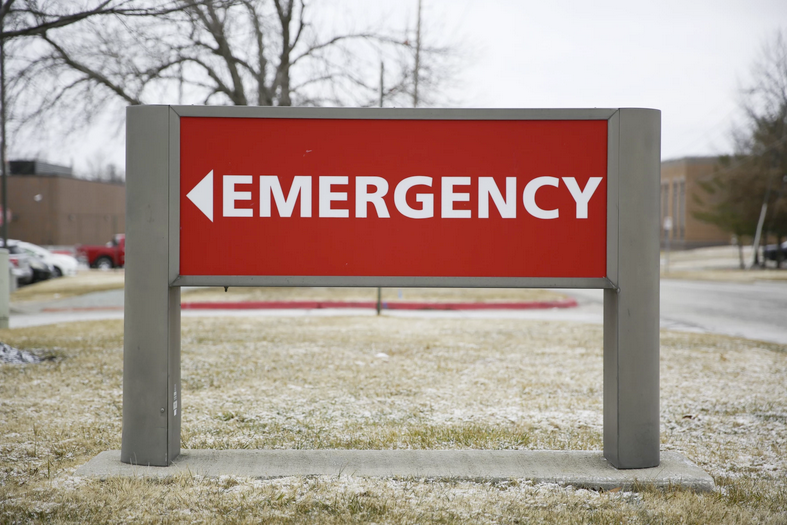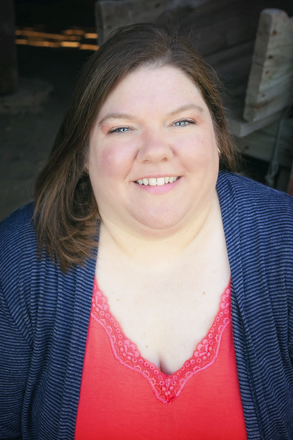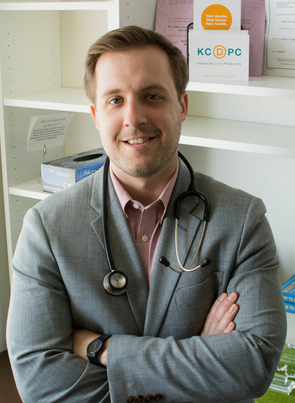
By NOMIN UJIYEDIIN
Kansas News Service
Sometimes, Becky Angell doesn’t even realize she’s started crying.
She’s been a nurse for seven years, and worked in an intensive care unit in Olathe for the past two. She loves her job and is used to seeing people die.
But the past months of caring for one desperately ill COVID-19 patient after another have left her overwhelmed and in tears at the dinner table and on the drive home from work.
“It’s this helpless, worthless feeling that you’re doing everything you can do and this patient is still not thriving,” Angell said. “It’s like endlessly treading water with no land in sight.”

As the pandemic’s worst months have stretched on in Kansas, many people who treat coronavirus patients have continued to feel the strain. The stress of watching so many people die, the fear of bringing the virus home to loved ones and the frustration of seeing people without masks have left health care workers, a group that already struggles with mental health, frazzled and emotionally drained.
Angell has trouble sleeping and sometimes loses her train of thought during conversations. She’s considering asking her doctor for antidepressants. She used to relieve stress by hanging out with her friends and coworkers. Lately, they’ve talked on social media and through group chats, but it’s not the same.
Usually, patients in an ICU get better and move on to other units. But the coronavirus has changed that. Now, when Angell sees elderly, COVID-positive people enter her unit, she assumes they won’t leave alive.
She went through a two-day stretch where only one of her patients survived. Meanwhile, she still comes across people who don’t wear masks or believe in science, including one couple she treated who tested positive for COVID but still didn’t believe in the virus.
“You’re kind of like, ‘What am I busting my buns at work for to keep people alive, if they’re just going to keep going out and making silly choices that put everybody in danger?’” she said. “You just kind of feel like you’re screaming into the wind.”
The stress of seeing patients die is getting to Dr. Hazen Short, too. He’s a family medicine physician who works in Kansas City, Kansas, and moonlights as an emergency room doctor in south-central and southeastern Kansas. Usually, small, rural ER shifts are calmer than those in larger hospitals. But not during the pandemic. Short has seen a few patients die as soon as they come into the ER. He’s noticed fewer people in rural parts of Kansas wear masks, even though some of those areas have been hit hard by the virus. And he’s worried about bringing the virus home to his wife and child.
“The hardest thing is the days before the shift. Because I know I have to go and I don’t know what I’m going to see,” he said. “I get very anxious before my shifts start and then I have trouble unwinding after.”

Short has tried relaxation techniques, and is thinking of going to therapy for the first time. His anxiety feels like a buzzing in his chest and head that sometimes he can’t get rid of. It can be hard to stop thinking about the family members who are told about their loved ones’ deaths over the phone. Or thinking: what he could have done differently to save someone’s life?
“You think about the patients that were really sick, and then, ‘Well, maybe I could have started this antibiotic or done this test instead of that,’” he said. “It’s impossible to be perfect, and I understand that. But it’s something that most physicians go through.”
Physicians have long had worse mental health than the general public, said Dr. Srijan Sen, a professor at the University of Michigan. High-pressure training, long hours and an increasing administrative workload have contributed to higher rates of depression, anxiety and suicide among doctors, even before the pandemic.
Research suggests the pandemic has taken its toll, Sen said, especially now that early efforts to praise health care workers have faded.
“Fatigue has set in,” Sen said. “We’re seeing probably worse mental health among physicians than we’ve ever seen before.”
Health care workers often worry about a stigma about getting mental health treatment, both feelings that they internalize and that they feel colleagues might harbor.
“We care for others much more than we care for ourselves,” said Dr. Jessi Gold, a psychiatrist at Washington University in St. Louis who specializes in treating health care workers. “We don’t go get care because asking for help for that is a weakness.”
Gold thinks that hospitals and other employers could combat that perception by automatically signing up all employees for counseling, and letting people cancel if they don’t need it. Employers could also offer grants to cover the costs of mental health treatment, she said. Custodians, social workers, respiratory therapists, administrative staff and others are exposed to COVID at work, but aren’t paid as highly as doctors and nurses. There’s also not as much research about those groups.
“Health care workers come from a spectrum of financial backgrounds,” she said.
The Midwest saw its surge in cases later than some other parts of the country, meaning that many health care workers in the region experienced the anxiety of anticipation before COVID hit, Gold said.
Now that the virus has become so widespread, she’s worried the mental health system won’t be able to handle the flood of traumatized people likely to seek help after the pandemic is over.
“It’s like, if there was a storm and everybody walked outside and surveyed the damage, and then after surveying the damage, they took a deep breath and looked at themselves — that’s what's going to happen,” she said. “And then we’re going to see a huge influx of people.”
Nomin Ujiyediin reports on criminal justice and social welfare for the Kansas News Service. You can email her at [email protected] and follow her on Twitter @NominUJ.



